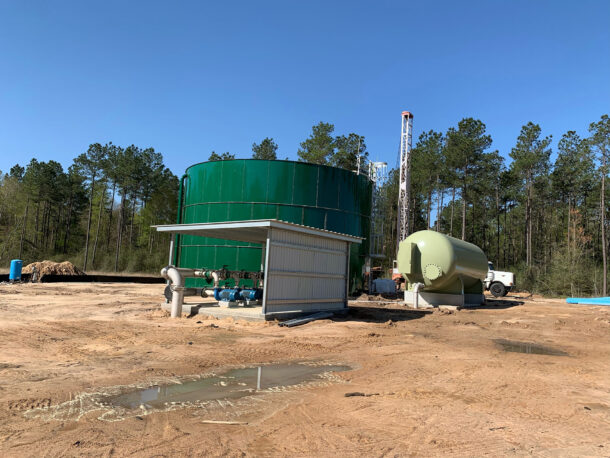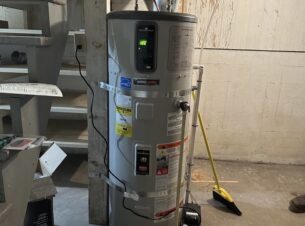Decentralization, reuse, digital water, and modern financing lead the pack
Few degrees of separation exist between any kind of commerce and the demand for water, and not just any water. Commercial businesses need quality control over their drinking, rinse, washing, process, boiler, or blowdown water, and what business doesn’t need to worry about water bills or discharge compliance?
Let’s check out some emerging trends in water and commercial wastewater treatment that are offering profitable advantages.

Decentralization
Decentralized wastewater treatment means scaling infrastructure down and siting it right where it’s needed, avoiding construction of long, expensive pipelines and shrinking utility bills.
At its core, the concept of decentralized wastewater treatment revolves around the principle of self-sufficiency and customization. Instead of relying on the conventional model of transporting wastewater through lengthy and expensive pipelines to centralized treatment plants, commercial entities are now opting to handle their wastewater locally. This approach minimizes the need for extensive and costly pipeline networks while also reducing the associated energy consumption and maintenance requirements.
A key enabler of this decentralized model is the growing trend of containerized modular equipment. This trend involves the packaging of treatment processes into compact, pre-fabricated units that can be easily transported and installed on-site. These modular units can accommodate various treatment technologies, allowing businesses to tailor their wastewater treatment to their specific needs and operational demands.
Reuse
The escalating global price of water has ignited a profound shift in how businesses perceive and manage their water resources. The concept of reusing water, particularly in commercial settings, has emerged as a compelling solution that not only aligns with economic sensibilities but also addresses pressing environmental and social concerns.
Traditionally, water has been treated as a disposable resource – used once and then discarded as wastewater. However, as the cost of obtaining fresh water continues to rise due to factors such as population growth, urbanization, and climate change, this approach has become increasingly unsustainable. Enter the concept of water reclamation and reuse.
Reclaimed water, also known as recycled water or gray water, refers to treated wastewater that undergoes advanced purification processes to meet stringent quality standards. This reclaimed water can then be repurposed for a wide array of non-potable applications, effectively sidestepping the need to source and transport fresh water for these purposes.
By adopting water recycling practices, commercial clients contribute to global efforts to ensure a sustainable water future. Moreover, they foster collaboration with surrounding communities, enhance their corporate image, and pave the way for a more resilient and environmentally conscious industrial landscape.
Digital Water
There’s a digital revolution going on in water management, with increasing adoption of systems that gather operational data and use it to improve efficiency. Early adopters have tended to be large water utilities, but firms are increasingly adopting digital water solutions from customer and asset management to increasing efficiency.
Historically, the adoption of digital solutions in water management was primarily associated with large water utilities that had the resources to invest in and implement these technologies. However, in recent times, this paradigm has undergone a seismic shift. Businesses are now actively embracing digital water solutions across various dimensions of their operations, with wastewater treatment emerging as a critical focus area.
One of the cornerstones of this digital transformation is the collection and analysis of operational data. In the context of wastewater treatment, this means harnessing data from sensors, monitoring devices, and other sources embedded within treatment facilities. These digital tools provide real-time insights into the performance of treatment processes, the quality of effluents, and the overall operational health of the wastewater treatment system.
More Flexible Financing
However there is a big problem with businesses taking control of their own water needs to lower water costs and control quality. Namely, if you’re manufacturing widgets, you want to concentrate on widgets. You don’t want to become a water utility.
Commercial businesses want the hyper-efficiency of modern membrane processes like reverse osmosis, microfiltration, nanofiltration, ultrafiltration, and membrane bioreactors onsite and tweaked to specific applications. But it doesn’t want the high technical and human resources demands of keeping them running for decades. And business wouldn’t mind avoiding astronomical CAPEX.
In response, infrastructure financing agreements that supply water infrastructure without the demands upon industry are trending. They retain a specialized water company for long-term operations and maintenance, allowing the widget manufacturer to keep focus on widgets. Some examples are the build-own-operate (BOO) and build-own-operate-transfer (BOOT) contract structures.
In the public sector, BOO and BOOT deals are well known in the context of public-private partnership (P3) arrangements, but they are now also trending in the private sector. Treatment with advanced processes is very desirable, but water infrastructure has never been cheap, and cutting-edge processes can carry daunting price tags.
That may account for the trend among water companies to offer not just treatment solutions but financial solutions. Demand for water as a service rather than as an asset is a market force with the potential to speed up adoption of all the other trends of decentralization, reuse, and digital water in the commercial industry moving forward.




Join the conversation: